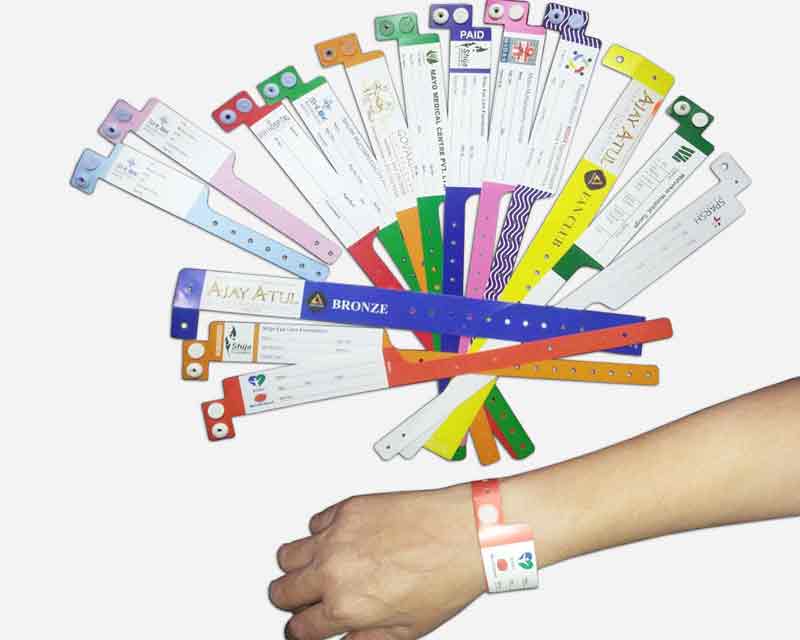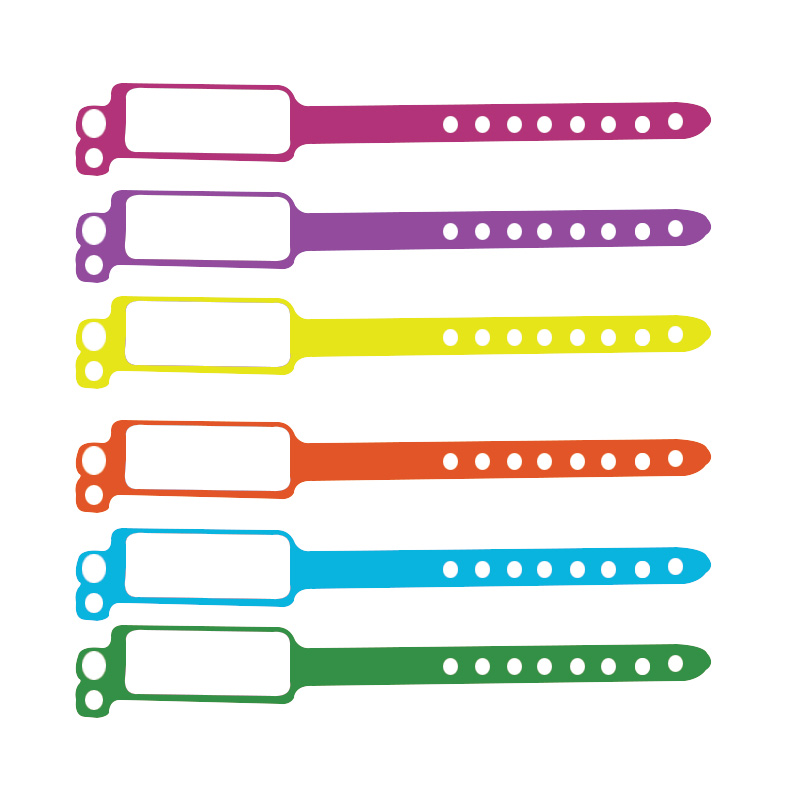The Role of a Patient Identification Band in Improving Hospital Patient Tracking Systems
The Role of a Patient Identification Band in Improving Hospital Patient Tracking Systems
Blog Article
Checking Out the Numerous Sorts Of Patient Identification Band Made Use Of in Clinical Facilities
In the detailed globe of medical care, the crucial function of Patient Identification bands frequently goes unnoticed. These bands, varying from easy paper wristbands to advanced RFID bands, form the backbone of Patient safety and security protocols, guaranteeing accuracy in Patient Identification.
Understanding the Value of Patient Identification Bands
While they might appear like simple devices, Patient Identification bands play an essential duty in clinical facilities. These bands act as an important tool for confirming Patient identity, preventing clinical errors connected to misidentification. The bands typically present vital details such as the Patient's name, age, blood group, and any kind of well-known allergic reactions. They permit medical care specialists to quickly access this crucial information, consequently facilitating accurate and punctual clinical therapy. Patient Identification bands likewise aid in enhancing management jobs, guaranteeing precise record-keeping and billing. Despite their simpleness, these bands personify the concept of Patient safety and security, a foundation of quality health treatment. Without them, the threat of medical errors, and as a result, Patient injury, could dramatically increase.
Typical Paper Wristbands: Their Use and Limitations
Traditional paper wristbands have actually been a staple in Patient Identification throughout different clinical facilities. While their usage prevails, they nurture specific constraints that might impact their effectiveness in Patient management. This area will concentrate on the extent of their application and the fundamental disadvantages related to their usage.
Paper Wristbands: Usage Range
In the realm of Patient Identification, paper wristbands have actually long held a vital duty. These bands are usually used in outpatient setups, where the Patient's remain is short-lived. The wristbands consist of crucial details such as the Patient's name, date of birth, and an one-of-a-kind Identification number. This basic, yet effective system, allows physician to promptly and precisely recognize individuals, making sure the proper treatment is carried out. Paper wristbands are also utilized in emergency situations, where rapid Identification is extremely important. Their use includes events like blood donation drives and mass vaccination programs, further highlighting their flexibility. Despite advancements in modern technology, the modest paper wristband stays a trusted and cost-effective remedy for Patient Identification in various healthcare scenarios.
Limitations of Paper Wristbands
Regardless of their widespread usage, paper wristbands are not without their drawbacks. In enhancement, paper wristbands often lack the technical abilities of more modern choices, such as barcoding or RFID chips, limiting their functionality to merely presenting created details. Paper wristbands can create pain or skin irritation to some individuals, particularly when put on for prolonged periods.
Barcoded Wristbands: Advancements in Patient Identification
While Patient Identification has long been an important element of medical care, the introduction of barcoded wristbands represents a considerable leap onward. These bands utilize the simplicity of barcoding modern technology, permitting for Patient information to be quickly checked and accessed. They improve the speed and accuracy of Patient Identification, reducing the risk of medical mistakes connected to misidentification.
Superhigh Frequency Identification (RFID) Bands: an Action In The Direction Of Futuristic Healthcare
The development of Patient Identification bands has brought regarding the appearance of Radio Frequency Identification (RFID) Bands (patient identification band). These ingenious gadgets existing essential advantages for healthcare facilities, supplying an extra efficient and technically advanced means of Patient Identification. The implementation of RFID in healthcare is a considerable step in the direction of an extra futuristic strategy to Patient management and safety
Recognizing RFID Bands

RFID Bands: Key Advantages
Welcoming a future where modern technology and health care combine, radio regularity Identification bands supply a number of key benefits. Mostly, these bands boost Patient security by offering accurate, immediate Identification, thereby decreasing medical mistakes. RFID bands can keep a huge find here quantity of Patient information, consisting of case history and allergies, allowing personalized treatment. They likewise improve management jobs, as the automated data entry replaces manual procedures, improving performance and reducing paperwork. Furthermore, RFID bands provide real-time monitoring of clients, crucial in high-risk settings such as surgery or extensive treatment. These bands are resistant and resilient to ecological factors, guaranteeing constant performance. On the whole, RFID bands stand for a significant innovation in Patient Identification technology, profiting both clients and doctor.
Applying RFID in Health Care
These bands offer a seamless way to track and identify individuals, ensuring their security and improving efficiency in treatment procedures. RFID bands lower clinical errors by offering precise Patient Identification, which is vital in avoiding misdiagnosis or incorrect medicine management. Thus, the execution of RFID bands is a considerable action towards improving Patient safety and health care delivery.

Color-Coded Wristbands: Assisting in Quick and Accurate Medical Diagnosis
In the bustling setting of a clinical center, color-coded wristbands have actually become essential devices for swift and precise Identification of an individual's clinical condition. These wristbands, used by people, carry certain colors that represent various clinical conditions or conditions. Red might show allergic reaction dangers, while yellow may symbolize a loss threat. This system is created to offer immediate visual signs to healthcare providers, enhancing Patient safety and security and care high quality. In emergency circumstances, using these wristbands permits for quick decision-making. However, the effectiveness of color-coded wristbands depends on the harmony of color analysis across healthcare organizations, requiring common criteria for consistent application.
Methods for Efficient Application and Management of Patient ID Bands
Attaining optimal use Patient Identification bands demands a well-structured technique for their application and administration. The primary step entails training all health and wellness workers on the importance of correctly using and reading these bands. Medical facilities need to systematize the usage of ID bands across all departments, ensuring uniformity and minimizing inconsistencies. Normal audits ought to be performed to confirm adherence to policies and to fix any type of incongruities. Patient education and website here learning is also important; individuals have to recognize the purpose of the bands and the requirement for their consistent wear. patient identification band. Finally, it's vital to have a backup strategy in location, such as barcode scanning or biometrics, to ensure that Patient Identification is never ever compromised.
Verdict
Patient Identification bands are vital in clinical centers to make sure safety and precision. Traditional paper, barcoded, RFID, and color-coded wristbands each hold distinct benefits, ranging from cost-effectiveness to innovative data storage space and immediate medical alerts. Efficient execution and a fantastic read management of these bands can considerably lower medical mistakes, improve efficiency, and boost general Patient treatment. Hence, understanding and utilizing these Identification devices is vital for preserving high standards in medical care.
These bands, varying from basic paper wristbands to innovative RFID bands, form the foundation of Patient safety protocols, ensuring accuracy in Patient Identification.The development of Patient Identification bands has actually brought concerning the appearance of Radio Regularity Identification (RFID) Bands. Generally, RFID bands stand for a significant improvement in Patient Identification innovation, profiting both individuals and health care service providers.
RFID bands reduce clinical errors by providing accurate Patient Identification, which is critical in preventing misdiagnosis or incorrect medication management. Patient education is additionally crucial; clients should comprehend the function of the bands and the demand for their continuous wear.
Report this page